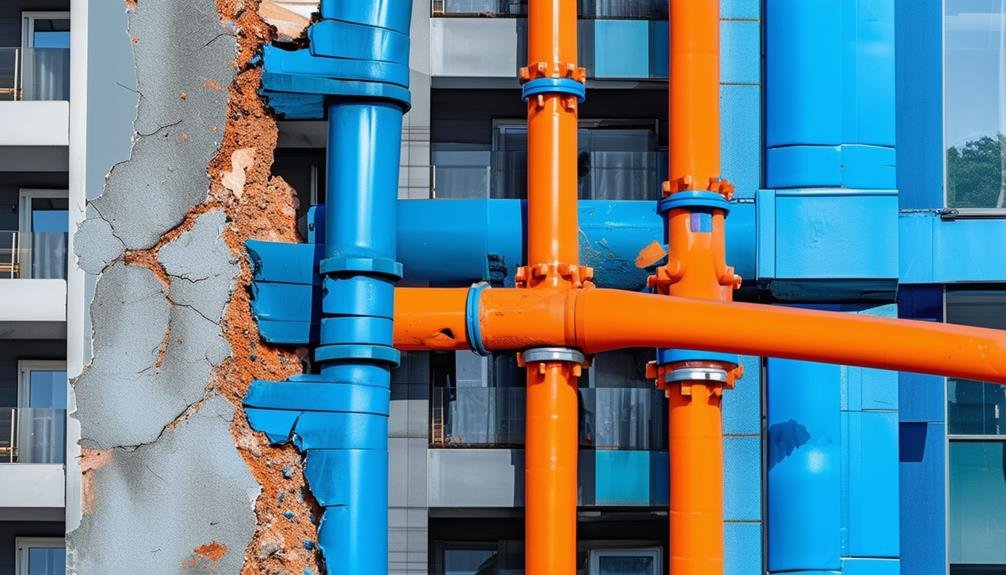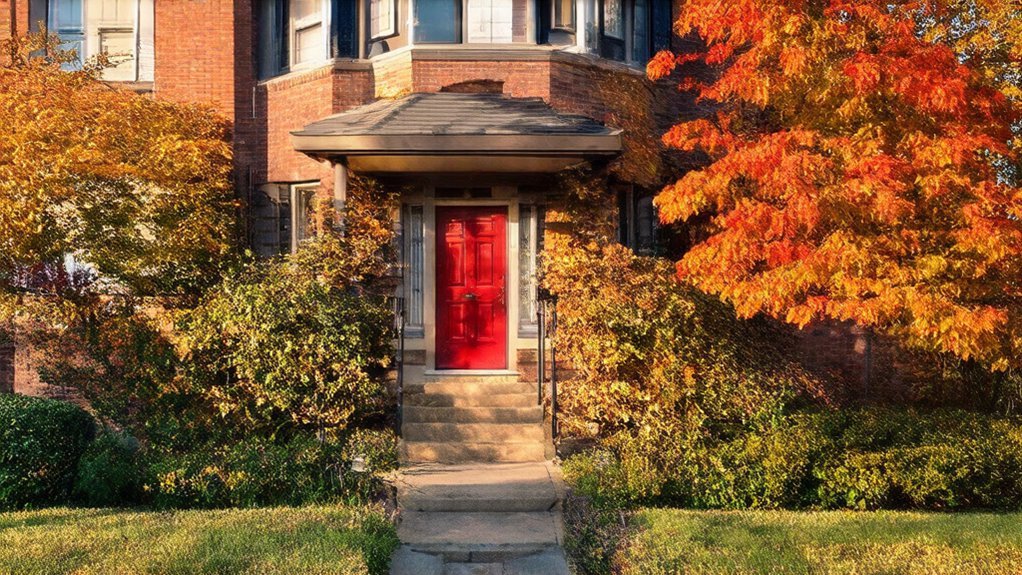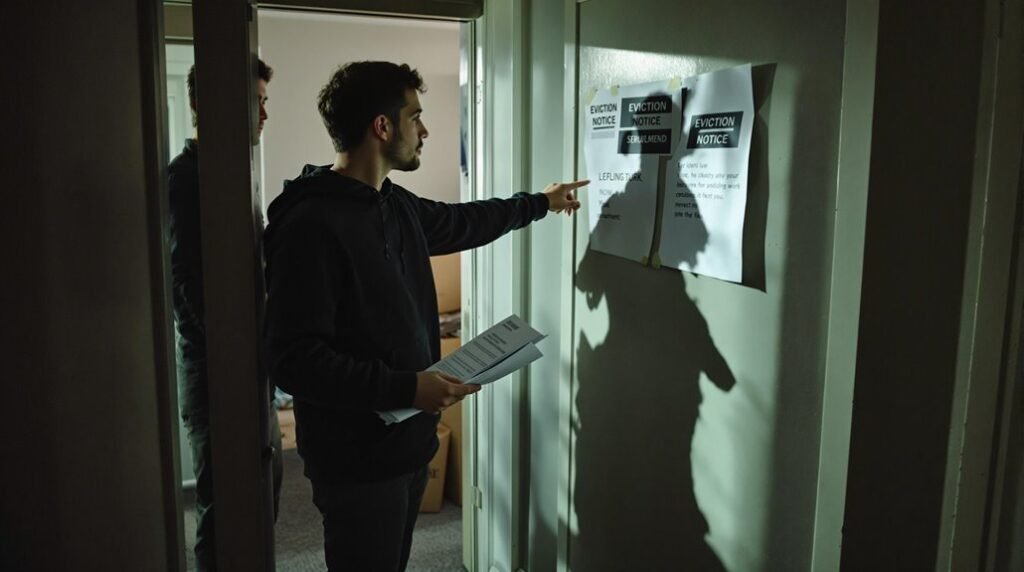Key Takeaways
- Buying a condo with Kitec plumbing carries significant risks, including catastrophic pipe ruptures and high repair costs.
- The Kitec plumbing system was recalled in 2005 due to accelerated corrosion and other design flaws.
- Replacing Kitec pipes can cost between $5,000 to $12,000, with some estimates reaching up to $20,000.
- Insurance coverage for Kitec plumbing is challenging to obtain and may come with higher premiums and deductibles.
- In the case of property damage, legal action against the seller or inspector may be necessary if disclosure was not properly made.
Concerns Around Kitec Plumbing
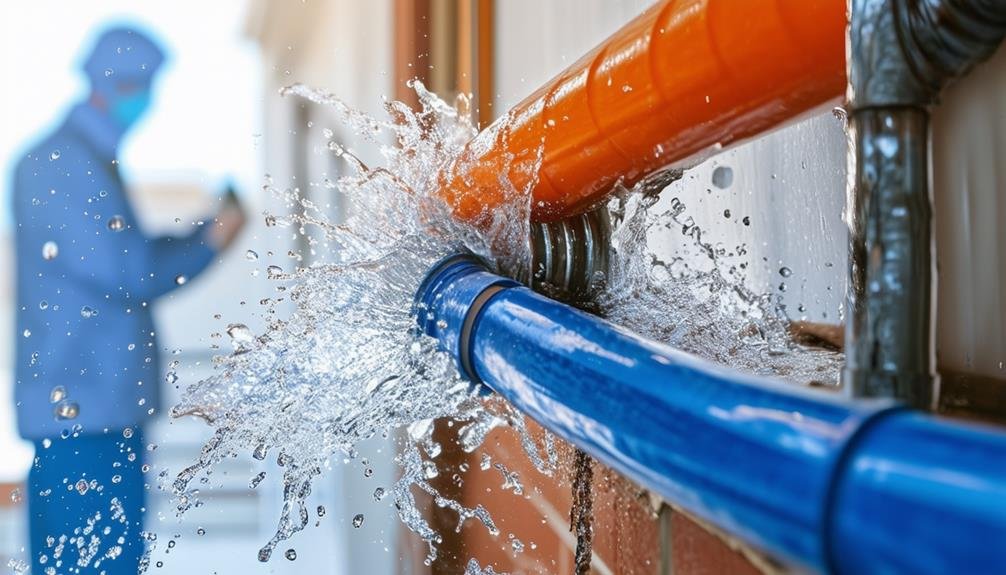
If you’re considering purchasing a condominium in Toronto, you should be aware of the potential risks associated with Kitec plumbing. Once hailed as a cost-effective innovation, Kitec plumbing now poses significant threats to your pocketbook. It’s essential to exercise caution when buying condos constructed between 1995 and 2007, as Kitec plumbing was widely used during this period.
Corrosion issues with Kitec can lead to burst pipes, causing extensive damage and hefty repair bills. The fact that sellers are legally bound to disclose Kitec plumbing information doesn’t always mean you’ll have complete transparency.
Make sure to include a property inspection in your purchase process to uncover any hidden issues. A little vigilance can spare you from the financial and legal complexities that often accompany Kitec plumbing.
Don’t let the allure of a low purchase price blind you to the potential plumbing nightmare that may be lurking behind the walls. Get informed and stay cautious to avoid being saddled with costly repairs.
Identifying Kitec Systems
To identify Kitec plumbing in a condo, you should check specific locations and look for distinctive markers. Bright orange or blue pipes should immediately grab your attention. Think of them as neon warning signs, but instead of saying ‘Caution,’ they’re screaming ‘Kitec Plumbing Alert!’ These pipes often carry brand names like Kitec, PlumbBetter, or IPEX AQUA, making them easy to spot.
Next, investigate the areas where Kitec is often found: under bathroom vanities, kitchen sinks, and around central hot water tanks. You might also notice brass fittings stamped with Kitec or KTC. These are your telltale signs that the condo corporation’s secret is out: they’ve got Kitec.
In Toronto and North York, building corporation numbers between 1200 and 1900 can also hint at Kitec’s presence. So, take a closer look and ask your condo corp the right questions. Kitec plumbing might be hiding, but it’s your job to uncover it.
Replacement Costs Expenses
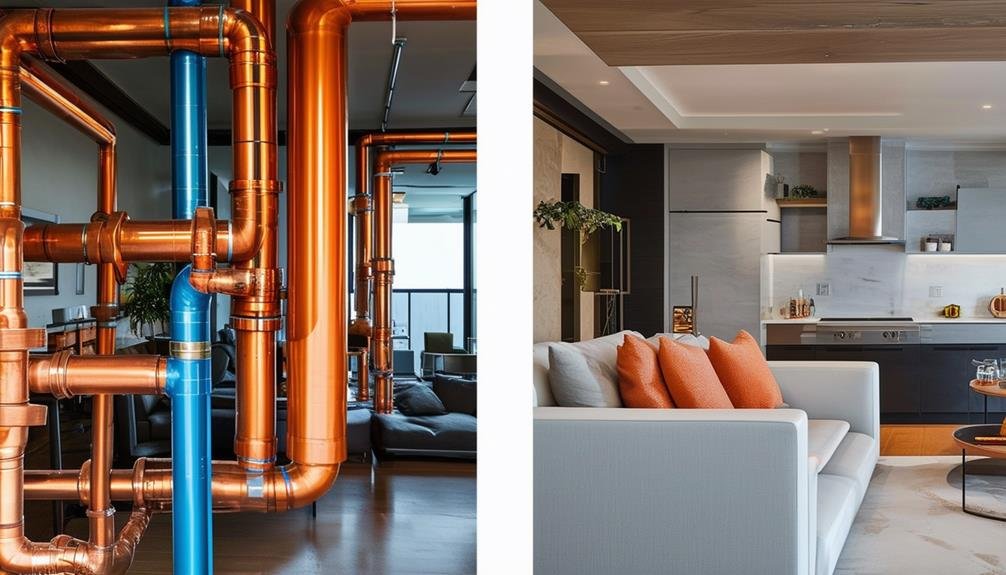
Replacing Kitec plumbing in your condo can cost you anywhere from $5,000 to $12,000, depending on the unit’s size and plumbing complexity. Yeah, it’s a hefty bill, but you can’t let those rusty Kitec pipes sit there, waiting to burst and turn your life into a water-based nightmare.
A burst Kitec pipe can cause significant water damage, not just to your own unit but potentially to your neighbors’ as well. That’s a whole other level of stress.
However, insurance coverage may still have your back. You might need a higher premium, but if you do have coverage, you’ll have better peace of mind.
After all, what you really want is a plumbing system that works without keeping you up at night, constantly thinking about the next pipe bursting incident.
Insurance Implications Disclosure
Buying a condo with Kitec plumbing can be financially risky due to the potential challenges of obtaining insurance coverage with higher premiums and deductibles. It turns out that insurance companies really don’t like it when your pipes might burst at any moment.
Those magical Kitec pipes were recalled in 2005 for their accelerated corrosion rate, which increases the likelihood of expensive damage. This bombshell gets particularly interesting when trying to get insurance. Prepare for higher premiums and higher deductibles because your home is basically ticking time bomb.
This lack of clear legal obligation for home sellers to disclose Kitec plumbing can make things even more complicated. You might buy that dream condo without knowing about the potential plumbing catastrophe waiting in the wings.
Then there’s the joy of reselling such a property. Imagine trying to sell a home with pipes that can spontaneously combust at any time. Potential buyers mightn’t be too thrilled about that, which negatively impacts your resale value.
Real Estate Buying Tips

When purchasing a condominium built between 1995 and 2010, it’s crucial to specifically inquire about the presence of Kitec plumbing during the inspection and negotiation process. Don’t assume that the sellers or their agents will enthusiastically announce that your dream home is a ticking time bomb of water damage.
Many condos and houses in Toronto were constructed with Kitec pipes, tempting fate with every flush and every shower. Be vigilant for orange and blue pipes with telltale brand names like Kitec or PlumbBetter, especially near the hot water tank and under sinks.
If the condominium corporation number falls between 1200 and 1900, your chances of finding Kitec pipes increases. Not disclosing Kitec plumbing is a serious omission, so make sure you include this in your negotiations. Don’t be a Kitec victim – educate yourself as this buys time before your new pipes disappoint you with a very wet surprise.
Ethical Disclosure Obligations
What Matters Most in Ethical Disclosure Obligations for Buyers and Sellers
If you’re purchasing a condo built during the 90s to early 2000s, it’s significant to be aware of the ethical responsibilities of sellers and condo boards regarding Kitec plumbing disclosures to safeguard your interests and property value.
Sellers have an ethical duty to inform potential buyers about the presence of Kitec plumbing. Failure to do so can lead to legal and financial consequences. Additionally, condo boards should include this detail in the Status Certificate to maintain transparency and protect buyers.
Buyers must be proactive in asking sellers directly about Kitec plumbing to guarantee they understand future maintenance costs and any impacts on selling prices.
Both parties must understand the ethical standards involved, ensuring that the real estate market operates with integrity. It’s vital to recognize and address these issues to build trust and avoid problems down the line.
Managing Kitec Risks Proactively
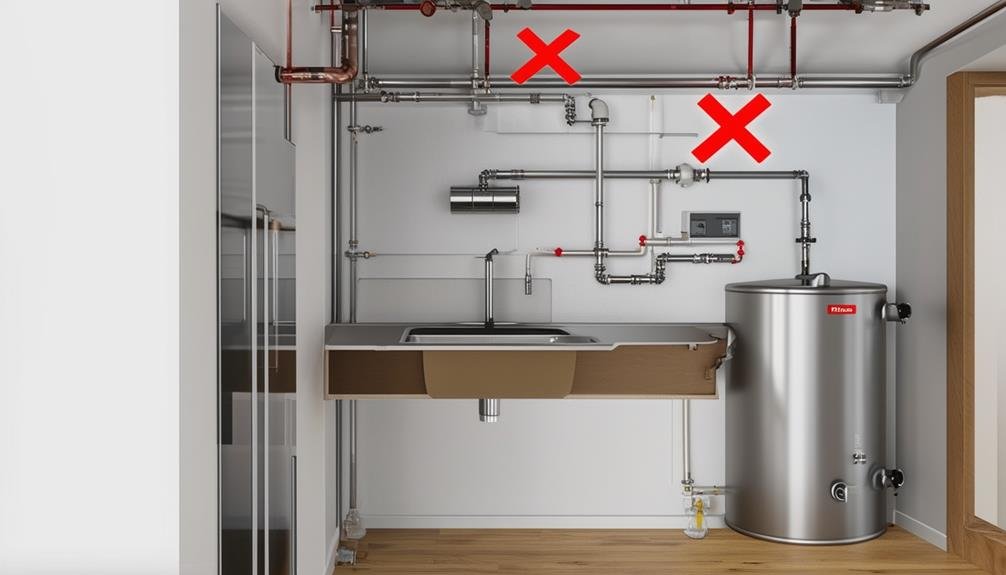
Identifying Kitec plumbing in your prospective condo is essential for making informed decisions that mitigate potential risks.
Think of it as checking for a ticking time bomb in your walls. The last thing you want is to be caught off guard by a burst pipe or leak, sending your wallet and your stress levels through the roof.
If you do find Kitec plumbing, don’t be afraid to ask questions. The worst-case scenario? You save yourself a whole lot of grief and expenses by walking away from a potential nightmare.
Conclusion
Buying a condo with Kitec plumbing can be a remarkably risky move, especially given the inherent threats of premature pipe failure. Considering that insurance companies often shy away from homes with Kitec, finding coverage might be a tall task.
Why commit financial suicide? Take control of your home purchase by insisting on a thorough inspection and pressing to replace those ticking time bombs.


